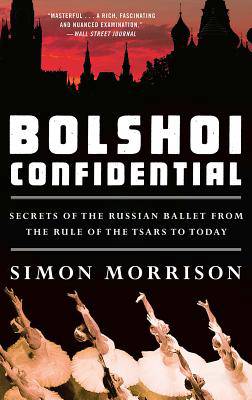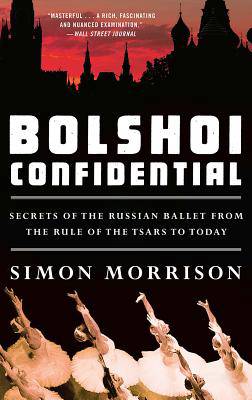
Je cadeautjes zeker op tijd in huis hebben voor de feestdagen? Kom langs in onze winkels en vind het perfecte geschenk!
- Afhalen na 1 uur in een winkel met voorraad
- Gratis thuislevering in België vanaf € 30
- Ruim aanbod met 7 miljoen producten
Je cadeautjes zeker op tijd in huis hebben voor de feestdagen? Kom langs in onze winkels en vind het perfecte geschenk!
- Afhalen na 1 uur in een winkel met voorraad
- Gratis thuislevering in België vanaf € 30
- Ruim aanbod met 7 miljoen producten
Zoeken
Bolshoi Confidential
Secrets of the Russian Ballet from the Rule of the Tsars to Today
Simon Morrison
Paperback | Engels
€ 30,45
+ 60 punten
Uitvoering
Omschrijving
A critical triumph, Simon Morrison's "sweeping and authoritative" (Guardian) work, Bolshoi Confidential, details the Bolshoi Ballet's magnificent history from its earliest tumults to recent scandals. On January 17, 2013, a hooded assailant hurled acid into the face of the artistic director, making international headlines. A lead soloist, enraged by institutional power struggles, later confessed to masterminding the crime. Morrison gives the shocking violence context, describing the ballet as a crucible of art and politics beginning with the disreputable inception of the theater in 1776, through the era of imperial rule, the chaos of revolution, the oppressive Soviet years, and the Bolshoi's recent $680 million renovation. With vibrant detail including "sex scandals, double-suicide pacts, bribery, arson, executions, prostitution rings, embezzlement, starving orphans, [and] dead cats in lieu of flowers" (New Republic), Morrison makes clear that the history of the Bolshoi Ballet mirrors that of Russia itself.
Specificaties
Betrokkenen
- Auteur(s):
- Uitgeverij:
Inhoud
- Aantal bladzijden:
- 512
- Taal:
- Engels
Eigenschappen
- Productcode (EAN):
- 9781631493447
- Verschijningsdatum:
- 24/10/2017
- Uitvoering:
- Paperback
- Formaat:
- Trade paperback (VS)
- Afmetingen:
- 142 mm x 224 mm
- Gewicht:
- 739 g

Alleen bij Standaard Boekhandel
+ 60 punten op je klantenkaart van Standaard Boekhandel
Beoordelingen
We publiceren alleen reviews die voldoen aan de voorwaarden voor reviews. Bekijk onze voorwaarden voor reviews.









